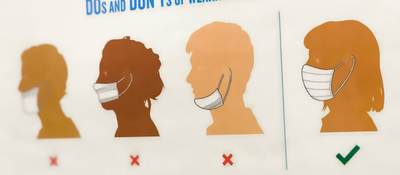August 6, 2020
There are several key activities required by the US Federal Drug Administration (FDA) to meet its expectations for the application of human factors (HF) engineering to medical devices. Arguably the most pivotal activity, which occurs toward the end of a product development process, is conducting a comprehensive HF validation usability test. Such testing is conducted to support claims that intended users can use a given product safely and effectively. HF validation tests typically involve HF researchers directly observing test participants as they interact with products. This kind of testing normally brings people close together.
Therefore, as we continue to socially distance in response to the COVID-19 pandemic, the question becomes whether or not FDA has relaxed its expectations regarding HF validation testing in response to the pandemic. Will it accept data from tests conducted using various remote means that keep people separated?
COVID-19 impact on HFE activities
HF validation testing requires weeks, and sometimes months, of planning. To maintain overall development and FDA submission timelines, it might seem beneficial to convert your planned in-person HF validation test to a remote (i.e., virtual) usability test. During such a test, HF researchers engage with participants via a video-conferencing tool (e.g., Zoom, Skype, Teams, Go-to-Meeting), often presenting the product being tested or a representation thereof via video or screen-share. But, will FDA consider the testing approach valid, and sufficiently realistic?
Recent correspondence suggests that FDA’s HF representatives are actively discussing the extent to which they will accept study data from remote HF validation tests. Thus far, FDA’s HF representatives have communicated to some manufacturers that its fundamental expectations for HF engineering activities have not changed in response to the COVID-19 pandemic. Specifically, per FDA’s final HF guidance, an HF validation test must involve representative users performing realistic use scenarios. All of a product’s critical tasks must be able to be thoroughly evaluated. And, HF researchers need to be able to collect a complete set of usability test data, including documenting all use errors and problems and the associated root causes.
FDA’s stance does not mean that remote HF validation testing is out of the question. But, remote testing might pose limitations that could jeopardize the test’s validity and its ability to meet all of FDA’s expectations.
Therefore, if you wish to take a remote (or other alternative) approach to HF validation testing, you should develop a test protocol and, most importantly, engage with FDA in a Q-Sub review to seek its agreement on the proposed approach before proceeding.
Options for remote testing
In our experience, certain types of products are better suited than others to a remote HF validation test.
For many medical devices and combination products, hands-on use through users’ in-person interaction is essential to evaluate all critical tasks. For example, to test a dialysis machine that requires critical physical interactions, such as connecting disposable tubing sets and fluid containers, remote testing is unlikely to be feasible. Similarly, remote testing might not be an effective way to assess an on-body injection device; one that requires users to apply the device to their abdomen, initiate medication delivery, and then detect auditory and/or tactile feedback that medication is being delivered successfully.
In these cases, and many others, it would be prudent to postpone testing until there is no longer a need for social distancing, even though delaying this pivotal activity can be disruptive and costly for manufacturers. In the meantime, there is plenty to do. You can verify that your use-related risk analysis is complete and prepare all necessary testing documents (e.g., test protocol, recruiting plan, data collection materials) so that you are ready to start testing promptly once it is safe to do so.
On the other hand, in some cases, a remote HF validation test might be an acceptable or even equivalent option as compared to in-person testing. If you are testing a medical software application that has no physical interface or interactions, conducting the test remotely might pose few differences compared to testing in-person. For example, well before the COVID-19 pandemic, FDA approved our team’s proposal to conduct a remote test of a computer-based software application that is used by hospital pharmacists to wirelessly program an infusion pump’s drug library. In this case, remote testing even provided some benefits over in-person testing. It enabled us to more easily recruit representative users from a relatively specialized, rare user group from across the United States.
FDA Emergency Use Authorization considerations
FDA has given some Emergency Use Authorizations (EUAs) for test kits, respiratory therapy devices, and other products deemed essential for battling the COVID-19 pandemic. It is likely that FDA’s HF expectations would be relaxed in the context of a device receiving an EUA. However, a device rushed to market to help fight COVID-19 would need to go through the normal regulatory process at a later time to be cleared for continued use.
Summary
In summary, FDA is currently upholding its existing HF expectations. This might mean your usability test needs to be postponed until it is safe to conduct in-person testing, or that remote testing could be an acceptable alternative in some cases. Emergo by UL’s Human Factors Research & Design team would be pleased to provide input regarding whether a remote testing approach is feasible and likely to meet with FDA’s approval. That said, you will ultimately need to seek FDA’s direct feedback on your proposed approach before proceeding.
Andrea Dwyer is Associate Research Director and Allison Strochlic is Research Director at Emergo by UL’s Human Factors Research & Design division.
Additional HFE and usability resources from Emergo by UL:
- Medical device and product evaluation support
- HFE user research for medical devices and IVDs
Request more information from our specialist
Thanks for your interest in our products and services. Let's collect some information so we can connect you with the right person.







